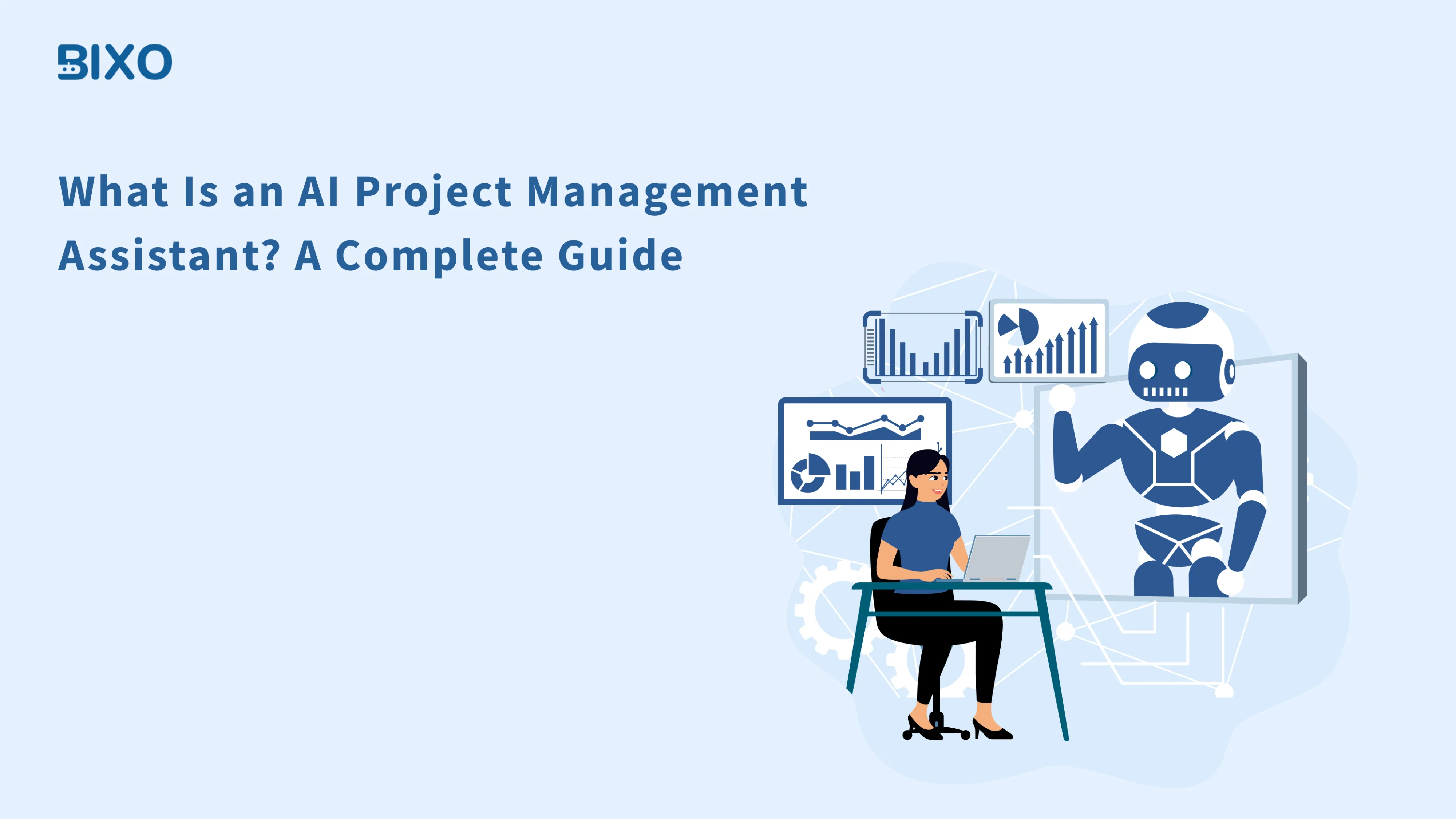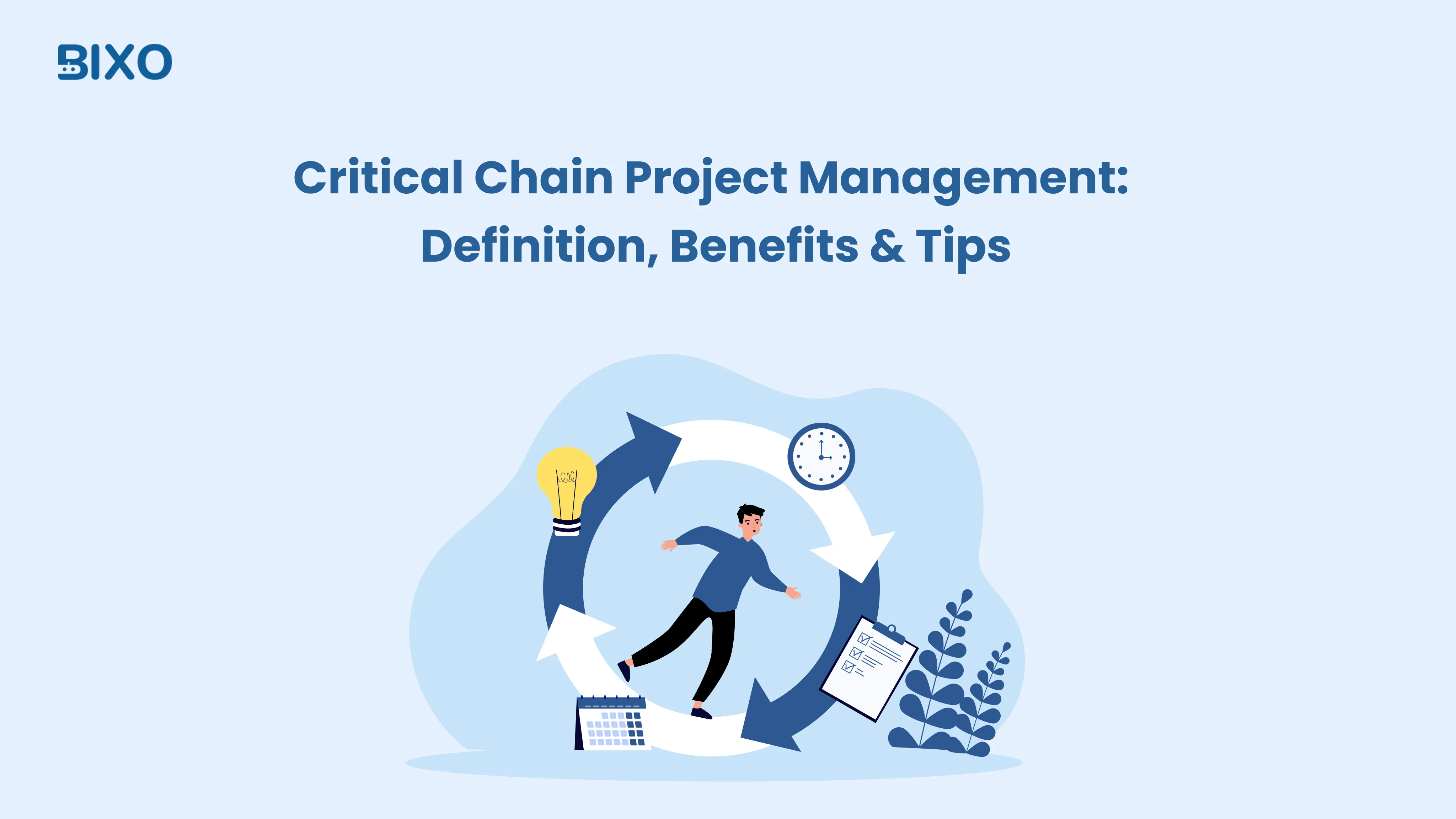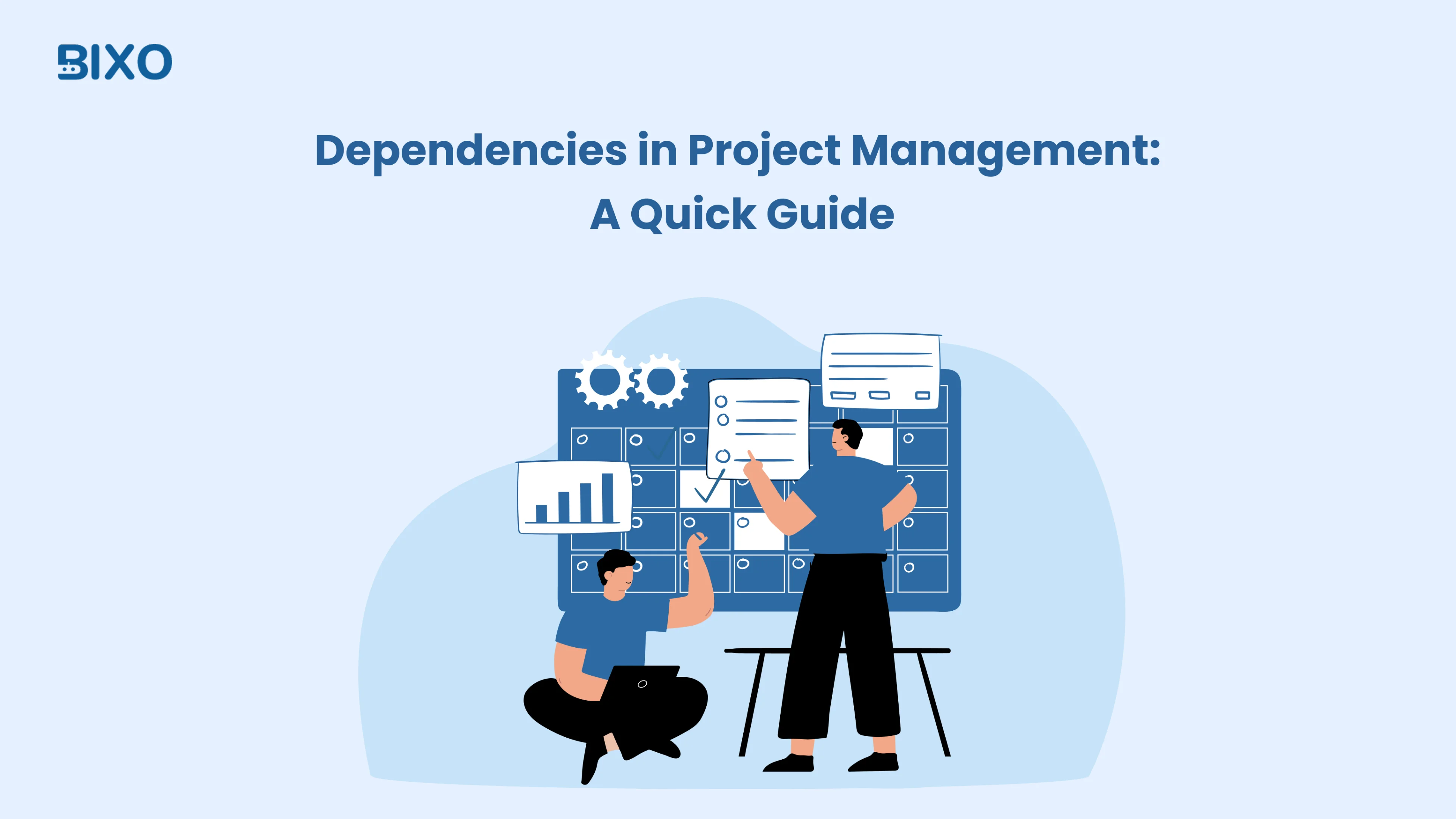
Table of Content
Focus on what matters. BIXO handles the rest!

Dependencies in project management can sometimes make you feel like your whole project is stuck because one task is waiting for another. Understanding them will allow you to plan better and avoid last-minute stress.
In this guide, we will help you understand what dependencies really mean, the different types you might come across, why they matter, and how you can manage them without any stress.
What Are Project Management Dependencies?
Project management dependencies are the connections between different tasks in a project. They show how one task depends on another to start or finish before it can move forward. Understanding these connections is important because a delay in one task can affect the rest of the project.
Being aware of dependencies gives you a clearer picture of how the project fits together. It helps you plan project better, avoid surprises, and anticipate possible slowdowns.
When you manage dependencies well, workflow automates more smoothly and meeting deadlines becomes easier.
What Are the Different Types of Task Dependencies?
In project management, there are four main types of dependencies you should know about. These help you explain how tasks relate to each other and which ones need to happen first.
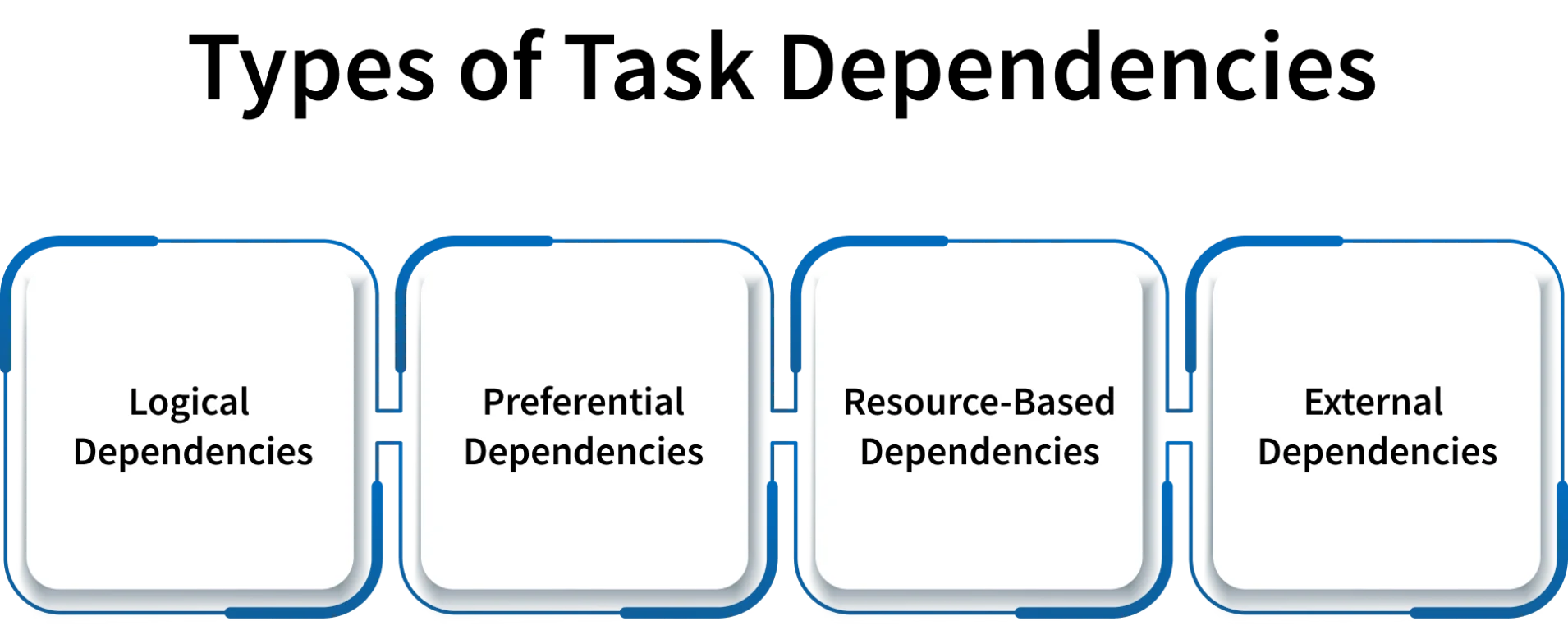
Logical Dependencies
Logical dependencies are tasks that need to happen in a specific order. One task has to be finished before the next one can start. For example, you can’t test software until it’s built. Following these dependencies helps your project flow smoothly and keeps everyone on track.
Preferential Dependencies
These are not required by the project itself, but your team prefers to do things in a certain order for better results.
Your team might like to review the presentation first before sharing it with the client. It’s not a must, but it helps catch mistakes and feel more confident.
Resource-Based Dependencies
Here, tasks are dependent on the availability of people or tools. If two tasks need the same resource, one has to wait.
If your only video editor is busy working on one task, the next one has to wait for their turn. It is just about timing and availability.
External Dependencies
External dependencies rely on factors outside your team or company, such as waiting for approval from a client or receiving materials from a supplier. Because you don’t have full control over them, they can be tricky and often need some extra buffer time.
What Are the 4 Main Types of Dependencies in Project Management?
In any project, some tasks rely on others to start or finish. These relationships between tasks are called task dependencies, and they help you figure out the right order to get work done smoothly.
The four most common types are as follows:

Finish-to-Start (FS)
This is the most common type of task dependency. One task has to be completely finished before the next one can begin.
Consider this: You cannot review a report before it’s written. The second task depends on the first one being completed. If there’s a delay in writing, If there’s a delay in writing, the review cannot move forward on time.
In project terms, this could be something like: “We will not complete the launch of the website until the design is 100% approved”.
Start-to-Start (SS)
In this case, two tasks can begin at the same time, or one right after the other starts. They don’t have to finish together, just start close together.
Imagine that you are outlining a blog post and your designer is simultaneously making graphics. As long as the first step of writing begins, the graphics don’t have to wait for the whole draft to be done.
This setup helps speed things up and keeps the team working in sync.
Finish-to-Finish (FF)
Here, both tasks need to be completed around the same time. One can’t finish without the other being done too.
A real-life example: Imagine you are reading edited text and someone is in the process of completing the layout. You both need to wrap up at the same time so the document is fully ready to be sent.
Start-to-Finish (SF)
This one is a bit unusual and less commonly used. For this dependency, one task needs to start before the other can finish.
Think of a software project: The QA team can’t finish testing until the developers have started coding the feature. One task needs to begin before the other can be completed, keeping the workflow smooth and on project schedule.
This type of dependence can be found in 24/7 operations or roles with handovers.
Why Project Management Dependencies are Important?
Project management dependencies show how tasks in a project are connected. Understanding these links is crucial because one delay can affect the entire project timeline. Let’s look at how managing dependencies makes a real difference in your day-to-day work.

Keeps Your Project Flow Logical
Dependencies make sure work happens in the right order. This prevents tasks from starting too early or dragging on too long, keeping everything moving smoothly.
- Improves Scheduling Accuracy : Understanding how tasks are connected allows you to plan your schedule better and stay track of deadlines.
- Helps Use Resources Better: Dependencies show when people or tools are needed for different tasks. This way, you can assign work without overloading anyone or causing conflicts.
- Lowers Risk of Delays: When you spot dependencies early, you can see problems before they happen. This reduces delays and keeps the project running on schedule.
- Boosts Team Coordination: Clear task relationships help everyone know what to do and when. This improves team productivity, strengthens team communication, and keeps projects moving forward.
How to Identify Project Management Dependencies?
To identify dependencies, start by looking at all the tasks in your project and see how they connect. Understanding these links helps you plan better, avoid delays, and manage your project more smoothly. The following points will help you identify dependencies clearly and keep your team on track.
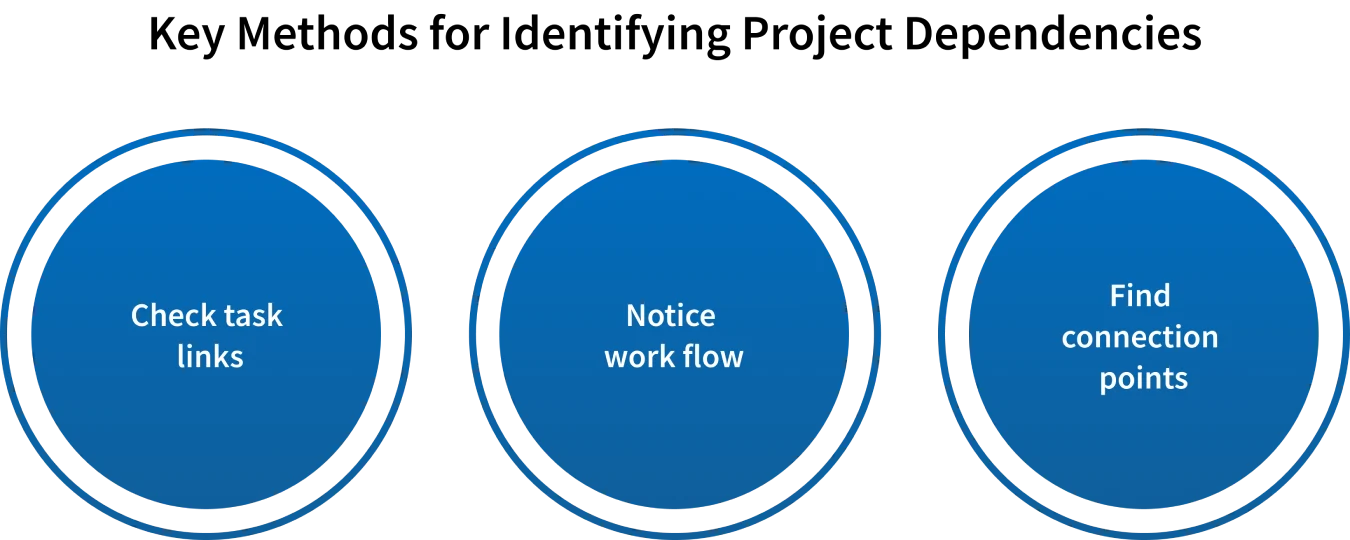
Review Task Relationships
Take a close look at how tasks in your project depend on each other.
- Start by noticing how your work connects and flows.
- Identify where the work naturally connects and passes from one step to the next.
- Keep tasks in sequence so the work stays on track.
Communicate with Team Members
Talking with your team helps you spot dependencies you might overlook on your own.
- Ask your teammates what they are working on and when they will finish.
- Share updates so no one is left behind.
- Adjust plans when something changes.
Analyse Task Requirements
Before starting any task, take a moment to understand what it really needs to move forward smoothly.
- Check if the task might hold up other work while it’s being done.
- Pay attention to outside factors like deadlines, approvals, or sudden changes that could affect the overall timeline.
- Ensure resources, approvals, or information are ready.
How to Manage Project Dependencies Without Delays?
To avoid last-minute surprises, you need to understand how tasks are linked and keep that in check throughout the project.
And this is the way to do it, step by step:

Identify Dependencies
Start by noticing how different tasks are linked together. Ask yourself and your team: Does this task need another one to be done first? This will help you understand the order of work and see where delays could happen.
Agree Dependencies
Once you know the task links, share them with your team. Do they understand these links? Do they agree on the order of work? Talking about it early helps avoid confusion and keeps everything on track.
Confirm Dependencies
After spotting the dependencies, fit them into your timeline. Set deadlines that follow the natural order of work, not just the order you prefer. Give a little extra time to tasks that might take longer or face small delays. This will help things run more smoothly.
Validate Dependencies
Don’t expect your plan to be perfect the first time. Go over it again, and if you can, ask your team to take a look too. See if you’ve missed any task links or added ones that aren’t really needed. This way, your plan stays clear and avoids problems later.
Monitor and Control Dependencies
Once the project is underway, keep an eye on how tasks are connected. If a task gets delayed, see which other tasks it affects. Fixing it early can stop bigger problems later.
Communicate Dependencies
Keep your team informed about how tasks are connected. If anything changes, share updates right away to avoid confusion or last-minute surprises. If something changes, let them know right away so there are no last-minute mix-ups.
Which Tools Help You Manage Project Dependencies Smoothly?
When you’re handling many tasks and people, the right tools can make a big difference. These aren’t just about tracking work; they help you stay ahead, avoid surprises, and keep everything connected.
These tools will assist you in managing project dependencies more easily and keep your team moving in the right direction.

BIXO
BIXO is an AI assistant that helps you manage task dependencies so your projects run smoothly. You can see what needs to happen first, and if something gets delayed, you’ll know right away how it affects the rest of the project.
It also makes managing your team easier. You can assign tasks, adjust schedules, and keep everyone on the same page without spending extra time chasing updates.
Kanban Boards
Kanban boards keep things simple. You can simply shift them between stages like “To Do,” “Doing,” and “Done.” It’s an easy way to see what’s moving forward and what’s stuck, so your team always knows where things stand.
You can also make it more useful by setting deadlines, assigning tasks to the right people, and adding labels. This helps everyone stay clear on what matters most, so tasks keep moving instead of getting stuck.
Gantt Charts
Gantt charts give you a timeline view of your project. You can visualise how the work is happening, what is dependent on what and when it is all to be done. It’s useful for planning big or detailed projects. They’re really useful when tasks depend on each other.
If one task gets delayed, the chart shows how it affects the rest of the plan. That way, you can adjust things early before it causes bigger delays.
Shared Calendars
Shared calendars are simple but powerful. They let everyone see what is happening and when, whether it is a deadline, a meeting, or a team task. You can block time, set reminders, and check availability. This keeps work flowing, avoids confusion, and helps the team stay on the same page without constant messages or interruptions.
Project Management Software
Project management software like Time Champ keeps your team organised and on the same page. You can easily assign tasks, set deadlines, and check progress. It helps you see if anything is falling behind and keeps work moving smoothly without stress.
Conclusion
Project management dependencies don’t have to be confusing. It’s really just about seeing how tasks are connected and how one thing can affect another. Once you understand this, planning gets easier, deadlines feel less stressful, and your team can keep moving forward without any delays. Having the right approach and tools like BIXO helps you manage the project dependencies easily without any stress.
FAQs
When dependencies are not managed, tasks may be delayed or get stuck, waiting to be fulfilled or completed by others, slowing down your entire project.
Yes, you can manage dependencies without special software, but it gets harder as projects grow. Tools like BIXO keep track of task connections and show how delays affect your project. This lets you focus on your team instead of chasing updates.
Yes. Too much micromanaging can slow you down. The key is to focus on what really matters and let your tools handle the rest so you can keep your project moving forward.
Clear dependencies help teams to work together better. Everyone knows what needs to be done, when, and by whom. Confusion often happens when dependencies aren’t discussed or shared openly.
Get a demo of BIXO
Recommended Blogs
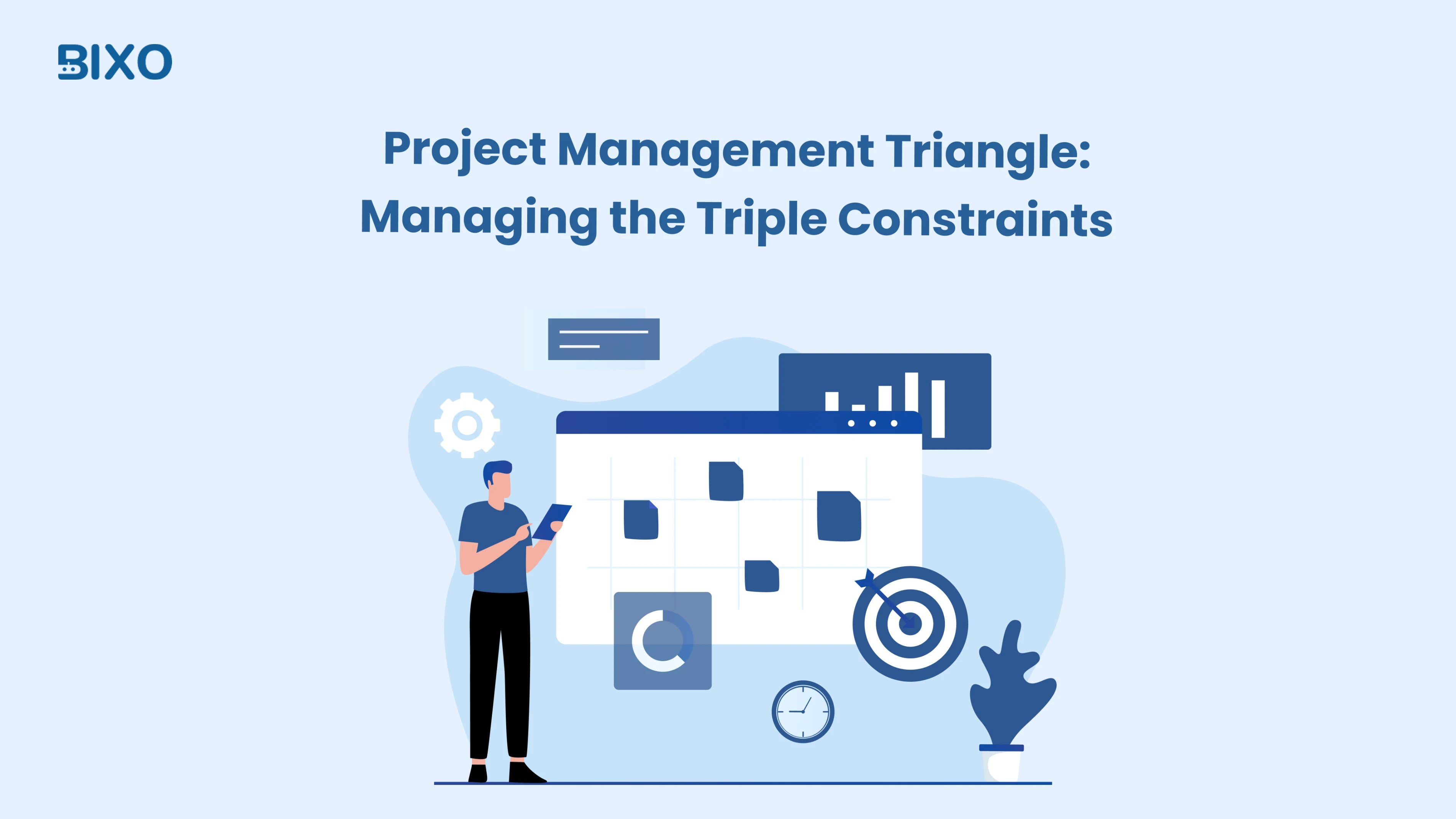
Project Management Triangle: Managing the Triple Constraints
Master the project management triangle by balancing scope, cost, and time with simple strategies that drive successful outcomes every time.
 Jahnavi Chintakrindhi |
Jahnavi Chintakrindhi |
 Oct 13, 2025
Oct 13, 2025

